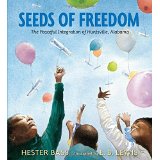 Al found himself in charge of the family country store when his father died during his senior year in high school and became the recipient of considerable advice from the old men who whittled on the front porch. A new opportunity arose for their wisdom when they heard we were getting married.
Al found himself in charge of the family country store when his father died during his senior year in high school and became the recipient of considerable advice from the old men who whittled on the front porch. A new opportunity arose for their wisdom when they heard we were getting married.
Well aware of my youth, they quizzed him, “Does she even know how to make biscuits?”
Al was incensed. How dumb did they think he was that he would marry a girl who couldn’t make biscuits! He assured them that he had sampled, and I could indeed make very fine biscuits. I don’t think he had much idea that he was caring for his future grandchildren when he checked out my bread-making skills.
Biscuits have become my badge of honor with grandchildren. As a toddler, Sam would down three or four for breakfast, hardly touch lunch, and forgo supper altogether. A few years later, his cousin Jack was overheard telling a friend that his grandma made the best biscuits. As teenagers, Sam and his older brother Hayden had a biscuit-eating contest that about made them both sick. If we arrive for an extended visit in the afternoon, breakfast for supper is often on the menu since nobody wants to wait until morning for biscuits. Now, I’m sure there are more important claims to fame than good biscuits, but I’ll take it since this has made me famous with the right people in my life.
And if you should decide to check out the grandchildren's judgment, just give me about thirty minutes notice. I’ll stick some biscuits in the oven and put on a pot of coffee.


































